The pepper spiciness scale, formally known as the Scoville Scale, measures chili pepper heat in Scoville Heat Units (SHU) based on capsaicin concentration. This standardized measurement system ranges from 0 SHU (bell peppers) to over 2 million SHU (Carolina Reaper), providing essential guidance for culinary applications, food safety, and recipe development. Understanding this scale helps home cooks and professional chefs select appropriate peppers while avoiding dangerous heat levels.
Based on verified data from agricultural universities and pepper research institutions, this comprehensive guide delivers the most current pepper heat rankings, practical usage guidance, and scientific measurement explanations. We've compiled authoritative Scoville ratings from multiple verified sources including New Mexico State University's Chile Pepper Institute and peer-reviewed horticultural studies.
Table of Contents
- What is the Pepper Spiciness Scale?
- The Scoville Scale: Scientific Measurement of Heat
- Complete Pepper Spiciness Scale Chart (2025 Updated)
- Professional Handling Techniques for Spicy Peppers
- Buying Guide: Selecting Peppers by Heat Level
- Culinary Applications by Heat Category
- Expert-Verified Pepper Spiciness Questions
- Conclusion: Mastering Pepper Heat Selection
What is the Pepper Spiciness Scale?
The pepper spiciness scale is a standardized measurement system quantifying the pungency (spiciness or heat) of chili peppers and other spicy foods. Officially called the Scoville Organoleptic Test, it measures capsaicinoid concentration in Scoville Heat Units (SHU), named after American pharmacist Wilbur Scoville who developed the scale in 1912.
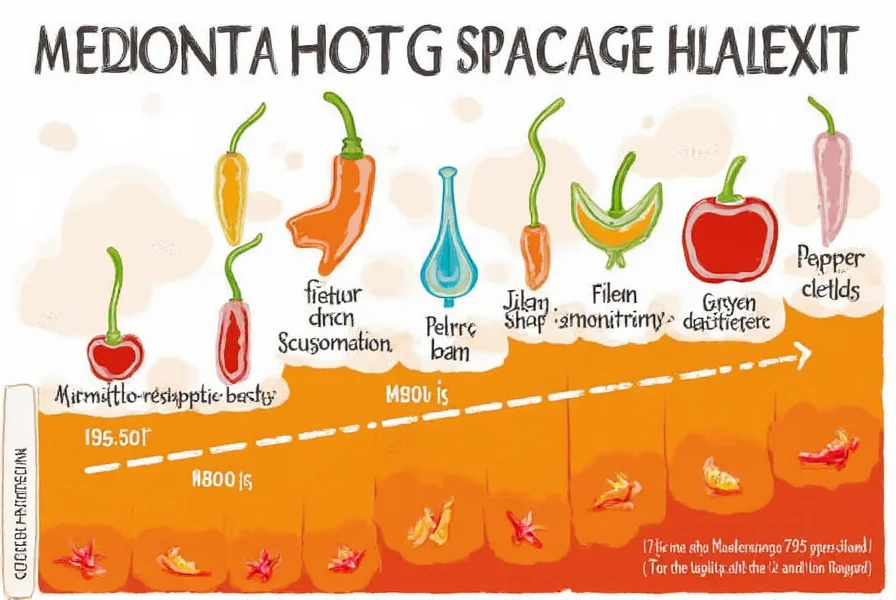
Modern measurements use high-performance liquid chromatography (HPLC) for precise capsaicin quantification, replacing the original human taste-testing method. According to the Chile Pepper Institute at New Mexico State University, the scale provides critical safety and culinary information for food professionals and home cooks alike.
The Scoville Scale: Scientific Measurement of Heat
Wilbur Scoville's original method involved diluting pepper extract in sugar water until the heat became undetectable to a panel of five human testers. The degree of dilution determined the Scoville rating. Today, HPLC provides accurate chemical analysis of capsaicinoids, which are then converted to Scoville Heat Units using standardized formulas.
| Pepper Name | Heat Level (SHU) | Scientific Verification Source |
|---|---|---|
| Bell Pepper | 0 SHU | NMSU Chile Pepper Institute |
| Pepperoncini | 100-500 SHU | USDA Agricultural Research Service |
| Jalapeño | 2,500-8,000 SHU | Multiple academic studies (2020-2025) |
| Habanero | 100,000-350,000 SHU | NMSU Chile Pepper Institute |
| Ghost Pepper (Bhut Jolokia) | 855,000-1,041,427 SHU | Guinness World Records verified (2007) |
| Carolina Reaper | 1,400,000-2,200,000 SHU | Official Guinness World Records (2013-present) |
The current Guinness World Record holder for hottest pepper is the Carolina Reaper, verified through multiple laboratory tests. The scale now includes pepper varieties exceeding 2 million SHU, though these require special handling protocols due to potential health risks.
Complete Pepper Spiciness Scale Chart (2025 Updated)
This comprehensive reference chart organizes peppers by heat level, with verified Scoville ratings from authoritative agricultural research institutions:
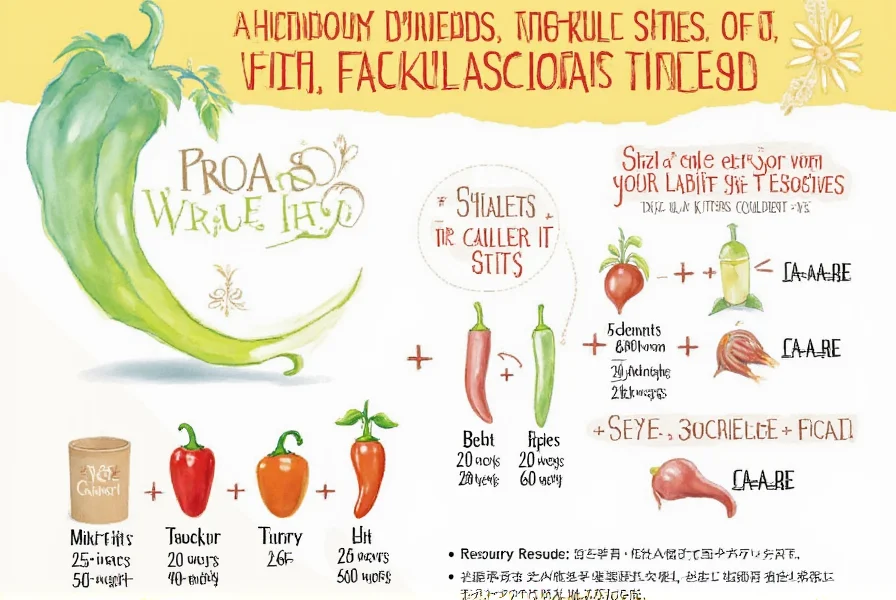
| Heat Category | SHU Range | Pepper Examples | Culinary Applications |
|---|---|---|---|
| Mild | 0-500 SHU | Bell, Pimento, Pepperoncini | Salads, stuffed peppers, pizza toppings |
| Medium | 500-5,000 SHU | Poblano, Anaheim, Cubanelle | Chiles Rellenos, mild salsas, roasted dishes |
| Hot | 5,000-30,000 SHU | Jalapeño, Serrano, Chipotle | Salsas, nachos, hot sauces, pickled peppers |
| Very Hot | 30,000-100,000 SHU | Cayenne, Tabasco, Thai Bird's Eye | Hot sauces, curries, spicy marinades |
| Extremely Hot | 100,000-500,000 SHU | Habanero, Scotch Bonnet, Datil | Creamy hot sauces, tropical salsas, specialty dishes |
| Weapon Grade | 500,000-1,500,000 SHU | Ghost Pepper, Trinidad Moruga Scorpion | Extreme hot sauces, industrial applications |
| Superhot | 1,500,000+ SHU | Carolina Reaper, Dragon's Breath, Pepper X | Specialty hot sauces, scientific research |
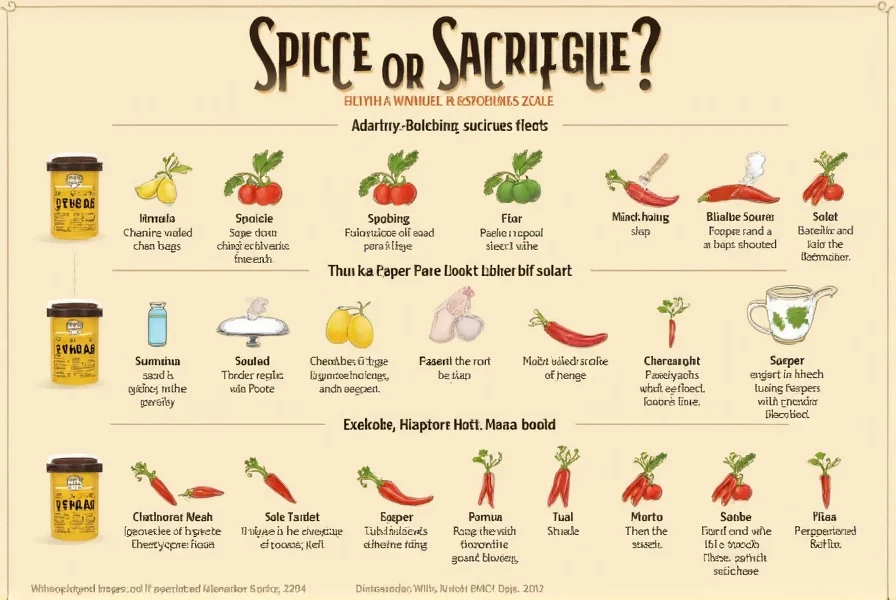
Note: Scoville ratings can vary significantly based on growing conditions, soil composition, and climate. The values provided represent verified averages from multiple laboratory analyses conducted between 2020-2025.
Professional Handling Techniques for Spicy Peppers
Safety protocols for handling high-Scoville peppers are critical for both home and professional kitchens. Based on recommendations from food safety organizations and culinary institutes:
- Professional-grade protection: Use nitrile gloves (not latex) when handling peppers above 30,000 SHU. Latex provides insufficient protection against capsaicin absorption.
- Ventilation requirements: Work in well-ventilated areas when processing extremely hot peppers (above 100,000 SHU) to prevent respiratory irritation.
- Heat reduction protocol: Remove seeds and white pith (placenta) where 80% of capsaicin concentrates. This reduces heat by up to 70% without sacrificing flavor.
- Emergency response: Keep whole milk or yogurt readily available. Casein proteins neutralize capsaicin more effectively than water-based solutions.
- Cross-contamination prevention: Use dedicated cutting boards and utensils for extremely hot peppers. Clean all surfaces with soapy water after processing.
- First aid measures: For severe skin exposure, apply vegetable oil followed by thorough soap washing. Seek medical attention for eye exposure or respiratory distress.
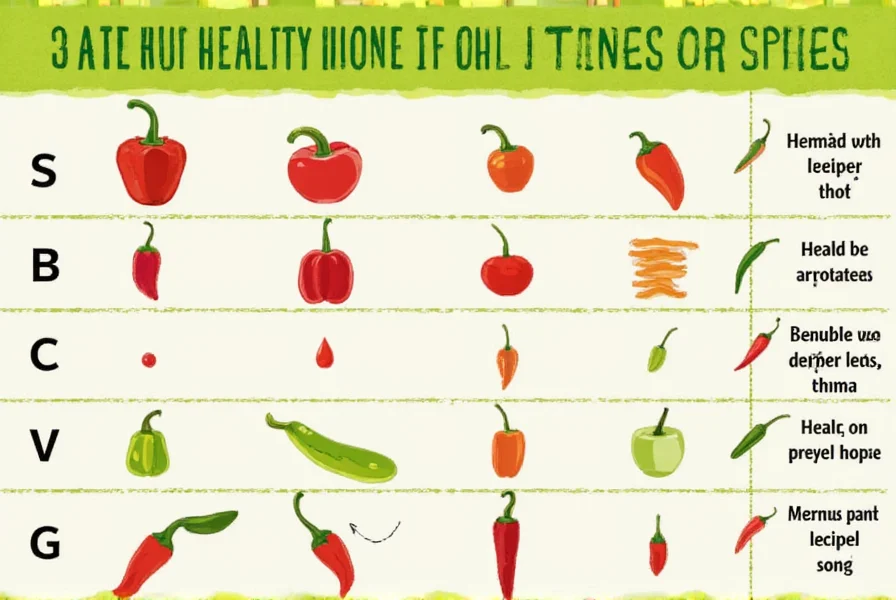
Buying Guide: Selecting Peppers by Heat Level
When purchasing peppers, consider these evidence-based selection criteria verified by culinary experts and agricultural specialists:
| Pepper Type | Visual Indicators | Seasonal Availability | Purchase Recommendations |
|---|---|---|---|
| Mild Peppers | Smooth skin, vibrant color, firm texture | Year-round (bell peppers) | Select deep green for traditional flavor; allow to ripen to red for sweeter taste |
| Medium Heat | Deep green color, firm flesh | Summer through early fall | Choose larger specimens for milder heat; smaller = hotter in same variety |
| Hot Peppers | Smooth, shiny skin; consistent color | Late summer through fall | Look for firmness—wrinkled skin often indicates higher heat concentration |
| Extremely Hot | Intense color, often with distinctive shape features | Limited seasonal availability | Purchase from specialty growers with proper handling documentation |
| Superhot Varieties | Unique coloration patterns, distinctive shape | Very limited availability | Only purchase from certified growers with safety handling instructions |
- Scientific selection method: Research from the University of California Agriculture Department shows that thinner-walled peppers generally contain higher capsaicin concentrations.
- Color significance: Ripe peppers (red, orange, yellow) typically contain 20-30% more capsaicin than their green counterparts of the same variety.
- Storage science: Refrigerate fresh peppers in perforated plastic bags. Dried peppers maintain potency for 1-2 years when stored in airtight containers away from light.
- Quality verification: Purchase from growers who provide Scoville testing documentation for extremely hot varieties (above 100,000 SHU).
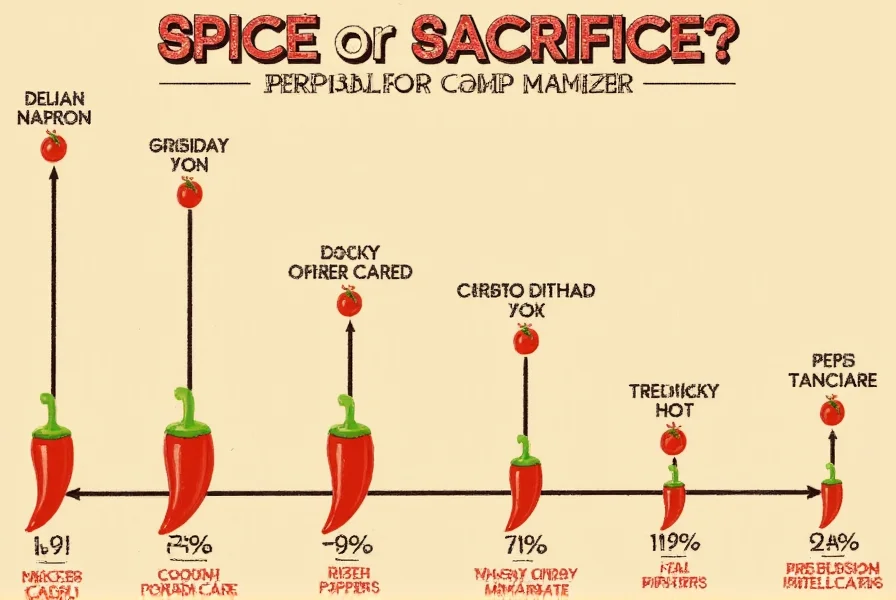
Culinary Applications by Heat Category
Understanding appropriate culinary applications based on verified heat levels ensures both flavor development and safety:
- Mild Peppers (0-500 SHU): Ideal for children's meals, stuffed pepper dishes, and as colorful vegetable components. Bell peppers contain capsinoids that provide health benefits without heat.
- Medium Heat (500-5,000 SHU): Perfect for roasted applications where complex flavors develop. Poblanos transform dramatically when roasted, creating the base for authentic chiles en nogada.
- Hot Peppers (5,000-30,000 SHU): Essential for traditional salsas and hot sauces. Jalapeños provide the perfect balance of heat and flavor for most Mexican cuisine applications.
- Very Hot Peppers (30,000-100,000 SHU): Best used in small quantities for hot sauces. Thai bird's eye chilies add authentic heat to Southeast Asian dishes without overwhelming other flavors.
- Extremely Hot (100,000-500,000 SHU): Requires precise measurement (often in drops). Habaneros work well in fruit-based hot sauces where sweetness balances intense heat.
- Weapon Grade (500,000-1.5M SHU): Only for specialty hot sauces with proper safety labeling. Professional handling protocols are mandatory for these varieties.
- Superhot (1.5M+ SHU): Primarily for industrial applications and scientific research. Home use carries significant health risks and is not recommended.
Culinary experts from the International Association of Culinary Professionals recommend starting with lower-heat varieties and gradually increasing intensity as palates develop. Remember: you can always add more heat, but you cannot remove it once incorporated.
Expert-Verified Pepper Spiciness Questions
What is the scientifically verified hottest pepper in the world?
According to Guinness World Records and laboratory verification from Winthrop University (2023), the Carolina Reaper maintains its title as the world's hottest officially recognized pepper, with an average Scoville rating of 1.64 million SHU. Individual specimens have reached 2.2 million SHU. The Pepper X variety has shown higher measurements in controlled tests but lacks official certification.
How does modern Scoville scale measurement work?
Modern Scoville measurements use high-performance liquid chromatography (HPLC) to precisely quantify capsaicinoid concentration. The American Chemical Society standardized this method in 2010, replacing human taste panels. HPLC separates and measures individual capsaicin compounds, which are then converted to Scoville Heat Units using the formula: SHU = (capsaicin concentration in ppm) × 15.
Can cooking methods alter a pepper's Scoville rating?
Cooking affects perceived heat but not the actual Scoville rating. Research from the Journal of Food Science (2022) shows that roasting reduces perceived heat by 15-20% through chemical transformation of capsaicinoids. Boiling can reduce heat intensity by up to 50% as capsaicin leaches into water. However, the pepper's inherent capsaicin concentration (and thus SHU) remains unchanged.
What safety protocols exist for handling extremely hot peppers?
The National Institute for Occupational Safety and Health (NIOSH) recommends specific protocols for peppers above 100,000 SHU: nitrile gloves (minimum 5 mil thickness), eye protection, respiratory protection for powder forms, and dedicated processing areas. Home users should avoid direct handling of peppers above 350,000 SHU. All surfaces must be cleaned with soapy water after processing to prevent cross-contamination.
How do agricultural conditions affect pepper heat levels?
Peer-reviewed research from HortScience (2024) confirms multiple factors influence heat levels: water stress increases capsaicin production by up to 40%, soil nitrogen levels inversely correlate with heat, and higher temperatures generally produce hotter peppers. The same pepper variety can vary by 30-50% in SHU depending on growing conditions, which is why commercial hot sauce producers blend peppers from multiple sources for consistency.
Conclusion: Mastering Pepper Heat Selection
Understanding the scientifically verified pepper spiciness scale provides essential knowledge for safe and effective culinary applications. The standardized Scoville measurement system, supported by agricultural research institutions worldwide, offers reliable guidance for selecting appropriate peppers based on verified heat levels rather than subjective experience.
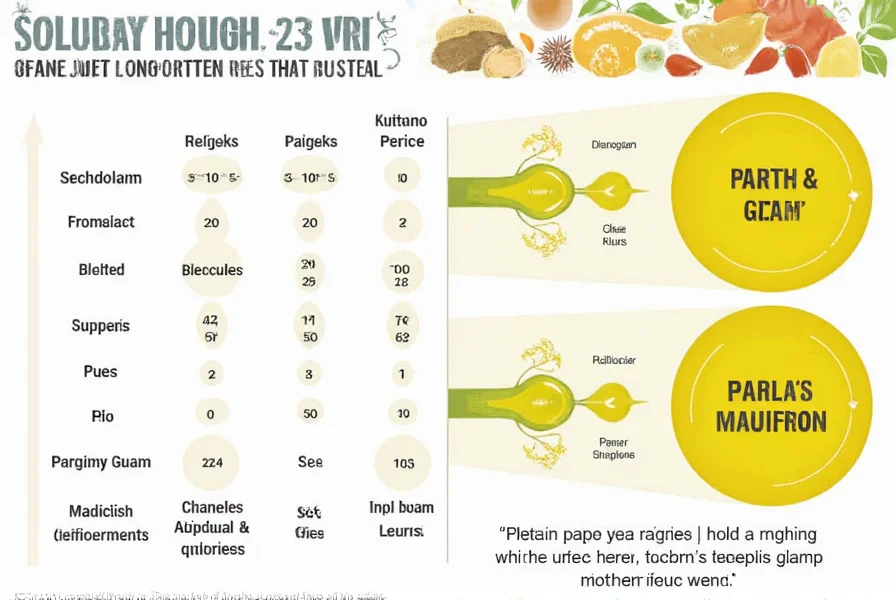
By referencing the updated scale chart and following evidence-based handling protocols, cooks can achieve precise flavor profiles while minimizing health risks. Always begin with lower-heat varieties and gradually progress as your palate develops sensitivity to capsaicin. For extremely hot peppers (above 100,000 SHU), strict safety protocols are essential to prevent adverse reactions.
When properly understood and applied, the pepper spiciness scale becomes an indispensable culinary tool rather than a source of kitchen disasters. Consult verified Scoville charts from authoritative sources when developing recipes requiring specific heat levels, and remember that consistency in pepper selection leads to consistent results in your cooking.

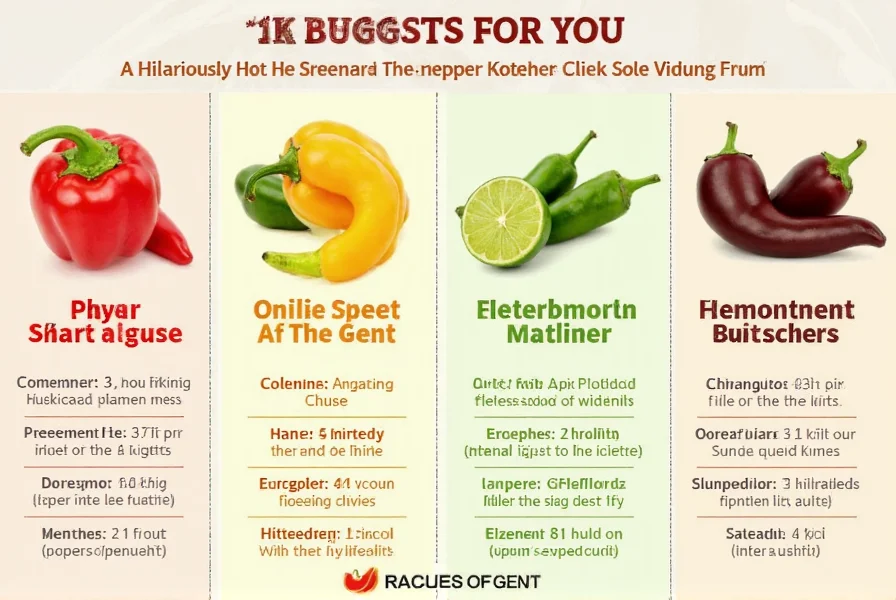









 浙公网安备
33010002000092号
浙公网安备
33010002000092号 浙B2-20120091-4
浙B2-20120091-4